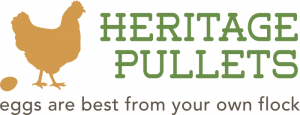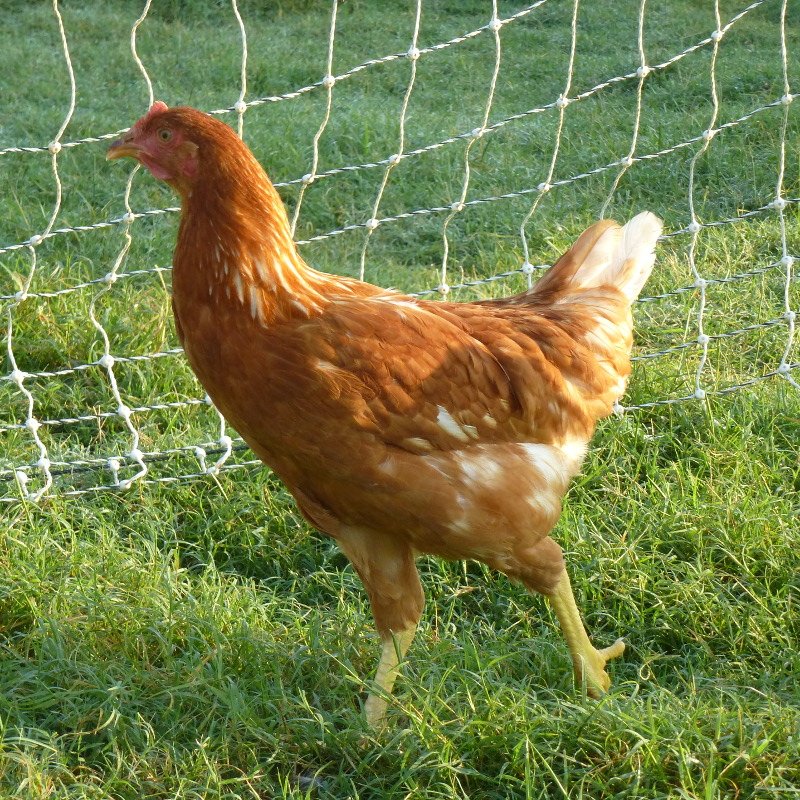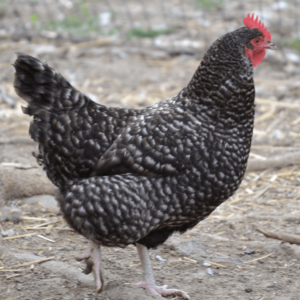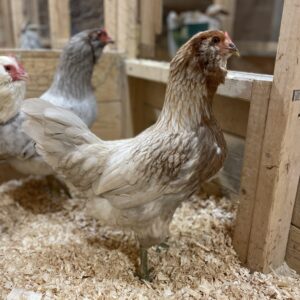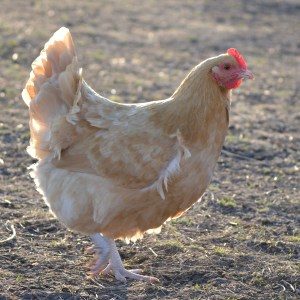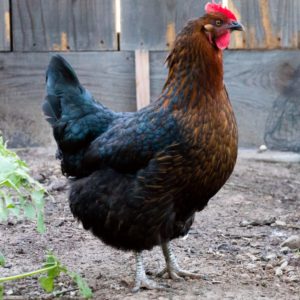Red Star Started Pullets
$30.95
Our most prolific brown egg layer. Red Stars are a friendly breed that has adapted extremely well to free-ranging and foraging.
Description
Here is a chicken with a lot of names – Red Stars, ISA Browns, Red Sex Link, Red Comets and other names are used for this hybrid egg layer. Other, similar hybrid egg layers available from other suppliers may have similar or different genetics that involve a cross of two breeds in order to produce sex-link offspring (explained below). These go by names such as Cinnamon Queens, Golden Comets, Golden Buffs, Gold Sexlink and others.
The breed was created from a series of crosses including Rhode Island Reds and Rhode Island Whites. The baby chicks are color-sexable at birth with the females being a reddish color and the males being smutty white in color. That is where the ‘Sex Link’ name comes from. This makes it very fast and very accurate to determine which baby chicks are males or females.
When customers ask us “What breed should I get?” I often recommend the Red Star. Despite the fact that they were originally developed for use as industrial, “battery cage” laying hens, they have adapted extremely well to free-ranging and foraging. They are very personable. Mine are very likely to come up to me for a scratch on the back and will eat out of my hand. They’re the most prolific brown egg layers of any breeds that we sell. Red Stars hens can lay over 300 eggs a year with the right feed. Plus they are an easy bird to raise and keep around.
Characteristics of Red Star Started Pullets
- Approximate weight at maturity: 5 pounds (hens) / 6 pounds (roosters)
- Egg-laying: excellent
- Egg color: brown
- Egg size: large
- Temperament: docile, easy to tame
- Broodiness: ISA Brown hens are not likely to go broody
- Feed conversion: excellent
- Country of origin: France
Will Red Stars Go Broody?
Because they were bred and developed for excellent egg production, it is not very common for Red Star layers to go broody. One might occasionally try to hatch eggs, but if you are looking for broodiness, I would recommend a different breed, such as a Buff Orpington.
How Long Do Red Stars Lay Eggs?
As with all chicken breeds, Red Stars egg laying tapers off as they get older. All hens lay their greatest number of eggs per year during their first year of laying, then fewer each subsequent year, as a general rule. The first year is measured from when they first start to lay until one year later.
Since Red Stars were specifically developed as commercial egg layers, where they are usually replaced at about 18 months of age to keep egg production high, we recommend replacing them about every two years in your home flock. Though they will continue to produce beyond two years of age, replacing them every 2 years will help you keep your egg production high, and it will keep the average age of your flock low.
Can I Hatch Eggs from My Red Stars?
You can hatch eggs from Red Stars or any other breed, but since Red Star chickens are a hybrid cross of two different breeds of parent stock, they will not breed true. In other words, the offspring that you get will be different than the parents.
When Do Red Star Stared Pullets Start Laying Eggs?
Because there are so many factors, such as feed, housing, climate and weather involved, we don’t make any guarantees as to when our chickens will start to lay eggs. But the Red Stars that we sell, under the right conditions, will normally be laying eggs by 22-24 weeks of age.
Are Red Stars Heat Tolerant?
Yes. Red Star chickens handle the heat quite well. Typically, smaller, lighter breeds (which would include the Red Stars and the White Leghorns) are more heat tolerant than larger, heavy-weight breeds. The Red Star’s single comb helps with this, too. Combs are a good heat radiator and play an essential role in keeping chickens cool. For southern climates with hot weather, single-combed chickens tend to have better heat tolerance than chickens with other, more compact comb styles.
How Well Do They Tolerate Cold Weather?
Red Stars tend to do well in cold weather. As with all chickens, we recommend that their winter shelter provide ample windbreak and protection against blowing rain. It should be well-ventilated to prevent excessive moisture from building up.
